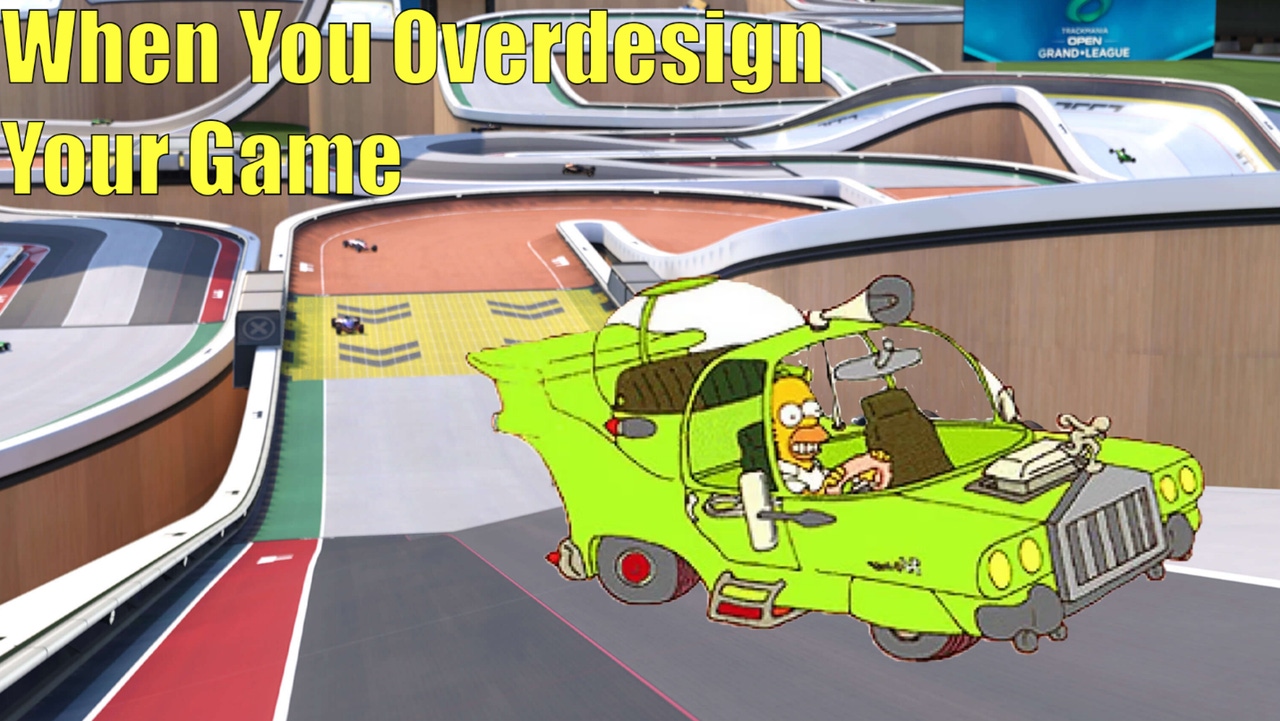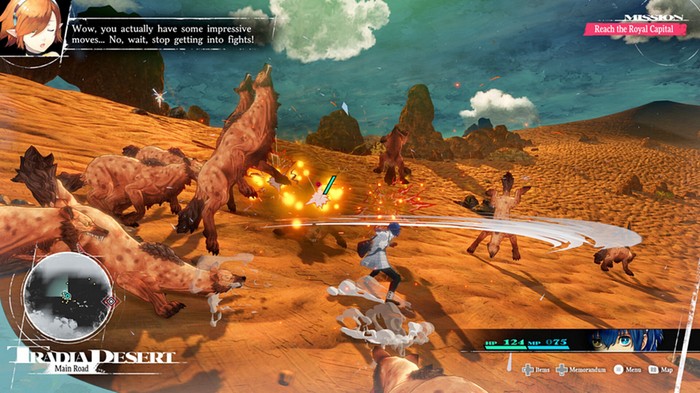Trending
Opinion: How will Project 2025 impact game developers?
The Heritage Foundation's manifesto for the possible next administration could do great harm to many, including large portions of the game development community.

Featured Blog | This community-written post highlights the best of what the game industry has to offer. Read more like it on the Game Developer Blogs or learn how to Submit Your Own Blog Post
Why over-designing your game can lead to an unfocused mess.

I’ve played plenty of videogames at this point, and when it comes to originality in design, you can find that in the indie space, especially from first-time developers. The thought of being the first one to create X or take genre Y in a new direction is a promising concept and goal for many designers. However, it does represent one of the easiest traps you can fall into as a developer; new or veteran, when you overdesign a concept.
When I talk about overdesign, there are two distinct areas that designers will focus on. The first is doing something completely out of left field with a genre in order to distinguish it from everything else. I’ve said this line before — originality for the sake of being original. Game genres no matter which ones we’re talking about have foundational elements to them — a platformer is about jumping or some kind of motions, shooters are about shooting (duh), and we can keep going. There are elements you can bend to create a different spin, but there are some that you can’t break without breaking the concept of the genre.
If I say that I’m making a first-person shooter, and the focus is on flying around collecting gems in first-person, then I didn’t make an FPS. Many games have tried to do the “my game is a combination of genre A and genre B” style of design. They often don’t realize that you’re not making a game for fans of A and B, but of A+B, and that is an entirely different audience.

Metaphor’s subtle brilliance is streamlining and making SMT’s gameplay and JRPG design as approachable as possible (source steam)
You cannot work in a genre that you don’t understand, and why I harp on designers to play as many examples of a genre that they can find; all the good, and all the bad. Remember, complexity is different from depth — having a complex game does not mean it’s a deep one. Some of the best games released in 2024 have been those that figured out how to sell either a simple idea or a game that looks simple but there is way more going on.
It’s a very hard line to walk as a developer, especially a new one, trying to create something original, but still having to color within the lines in a manner of speaking.
The other way developers can overcomplicate their games is a literal example — taking something that is simple and easy to play and just throwing more and more on top of that. A good example of this I’ve seen is with the evolution of action commands in games. The action command, which the first case I can think of is from Super Mario RPG, was a way of providing more interactivity in turn-based combat. The benefits of it was to give the player the opportunity to reduce incoming damage and increase the damage they do to speed up combat.
What I’ve seen from indie developers has been trying to elevate action commands and turn-based combat as a whole by making it more involved — adding in more systems and interactions during a fight. When I checked out games like Keylocker and Ikenfell, they’re both very charming games that have horrible churn rates from the people who played them.
One of the harshest lessons designers must learn is that more is not always better in the consumers’ eyes. A bane of good UI/UX are repetitive actions — something that the player has to be doing constantly in order to play a game. Having one heavily involved fight is fine; having every random encounter balloon out because of these mechanics is not. There should be a reward for figuring out a game, and just being able to play it normally doesn’t count.
I’ve said this before and I’m saying it again: depth is not the same as complexity. If something takes five minutes to work vs. something that takes one, people are going to prefer the speedier option. To compare designs, when I tried out the demo for Metaphor, a lot was done to speed up the press turn combat of the game and even reward the player for finishing fights without taking damage. The difference between Metaphor and the other RPGs is that Metaphor wants the player to get through combat as quickly as possible while retaining the depth of its design. The other RPGs create depth by slowing it down without providing anything else as a benefit.
In the past, I’ve talked about when complexity can work with the concept of “good jank” such as in Getting Over It. There are some surprisingly satisfying games that are about taking something further than what other games would have done, such as Pacific Drive. What’s important to understand is that even if you are going for an involved experience, playing the game itself should not be hard to do. Good jank relies on only one part of your gameplay to be janky, if your entire game is hard to control or confusing, then you missed the mark.
Great game design is often hard to land on for designers. There is always that allure to “go big” with your idea — create something no one has ever seen before that will earn you fame and fortune. When we talk about sustainable game design, that means knowing what you are capable of and building a game around that. The period in which designers could spend 5–10 years on a single dream project are behind us I’m afraid. Likewise, someone spending hours on a game to then decide if it’s for them are also gone. At most, you have the 2-hour period for a refund; at minimum, within 5–10 minutes of starting your game.

Balatro is proof that it’s better to provide depth under the surface of your game rather than hit the player all at once with it (source: Author)
The game industry continues to move fast and genres that are intentionally slow to play are finding themselves with a smaller and smaller consumer base. The fans are still there, but you can’t just throw money at a genre to create more of a fanbase. Speaking of the fans, this is also why playtesting is important when you are experimenting with something new because in the end, it doesn’t matter if you love your idea and think it’s perfect, when no one else can figure out how to play your game.
If you would like to support what I do and let me do more daily streaming, be sure to check out my Patreon. My Discord is now open to everyone for chatting about games and game design.
You May Also Like